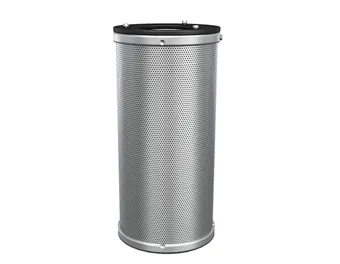 Tel:
+8615930870079
Tel:
+8615930870079
Dec . 01, 2024 03:00 Back to list
antistatic filter element
Understanding Antistatic Filter Elements A Key Component in Pollution Control
In today’s industrial landscape, safeguarding both equipment and personnel has never been more critical. One crucial aspect that has gained traction is the use of antistatic filter elements. But what exactly are antistatic filter elements, and why are they becoming indispensable in various industries? This article delves into the features, benefits, and applications of these innovative components.
What are Antistatic Filter Elements?
Antistatic filter elements are specialized filters designed to prevent the accumulation of static electricity while efficiently capturing airborne particulate matter. These filters are often employed in environments where flammable or explosive dust particles are present, as static electricity can ignite these particles, leading to hazardous situations.
Crafted from materials that possess inherent conductive properties, antistatic filter elements allow static charges to dissipate safely rather than building up on the surface of the filter. This feature makes them essential in industries such as pharmaceuticals, chemical manufacturing, and food processing, where safety is paramount.
Importance of Antistatic Properties
The presence of static electricity can lead to various problems, both operational and safety-related. Accumulated static charge can attract dust particles to machinery and equipment, leading to increased wear and maintenance costs. Additionally, in environments where volatile compounds are present, a simple static discharge can ignite a fire or even cause an explosion.
Antistatic filter elements mitigate these risks by ensuring that static electricity is continuously neutralized. Their conductive nature allows them to prevent the buildup of static charges, making them instrumental in maintaining a safe operational environment. Furthermore, by keeping machines free from dust, these filters help prolong equipment life and reduce downtime associated with cleaning and repairs.
Design and Construction
Antistatic filter elements are typically constructed from a blend of filtration materials that possess both mechanical and electrostatic properties. These materials can include synthetic fibers, cellulose, or even specialized polymers that have been treated to enhance conductivity.
The design of these filters is often tailored to the specific needs of different industries. For instance, filters used in the pharmaceutical sector may require finer pores to capture smaller particles, while those used in industrial applications may prioritize durability and high airflow rates.
antistatic filter element

Moreover, the filters can be found in various configurations, including cartridge, bag, and panel types, providing flexibility in installation based on the specifics of the ventilation system.
Applications Across Industries
The versatility of antistatic filter elements makes them suitable for a wide array of applications. Here are a few industries where their use is prevalent
1. Pharmaceuticals Ensuring a dust-free environment is critical for producing sterile products. Antistatic filters help maintain air quality in clean rooms, protecting the integrity of pharmaceutical processes.
2. Chemicals In chemical manufacturing, the handling of powders and granules often creates hazardous dust. Antistatic filters reduce the risk of explosions and protect equipment from contamination.
3. Food Processing Maintaining food safety is imperative. Antistatic filters contribute to cleaner air in processing plants, reducing the risk of contamination and preserving product quality.
4. Electronics The electronics industry generates fine particles during manufacturing, which can interfere with sensitive components. Antistatic filter elements help to ensure that clean air is circulated in production areas.
5. Aerospace In aerospace manufacturing, even the slightest contamination can lead to failures. The use of antistatic filters ensures that facilities remain clean and compliant with stringent industry standards.
Conclusion
Antistatic filter elements play a pivotal role in modern industrial operations by providing essential protection against static electricity and airborne contaminants. Their ability to enhance safety and efficiency makes them indispensable in a variety of sectors, from pharmaceuticals to aerospace. As industries increasingly prioritize safety and cleanliness, the demand for advanced filtration solutions like antistatic filter elements is likely to grow, paving the way for safer and more effective industrial practices in the future. Understanding these components is key to harnessing their full potential in creating cleaner and safer working environments.
-
Types and Applications of Air Filtration CartridgesNewsJul.28,2025
-
The Role of Gas Turbine FiltersNewsJul.28,2025
-
Mastering Air Filter Cartridge UseNewsJul.28,2025
-
Advanced Turbine Filters for Modern Gas TurbinesNewsJul.28,2025
-
Cellulose Air Filter Cartridge Advantages in Dust FiltrationNewsJul.28,2025
-
Cellulose Filters for Air Particle ReductionNewsJul.28,2025

 Email:
Email:





